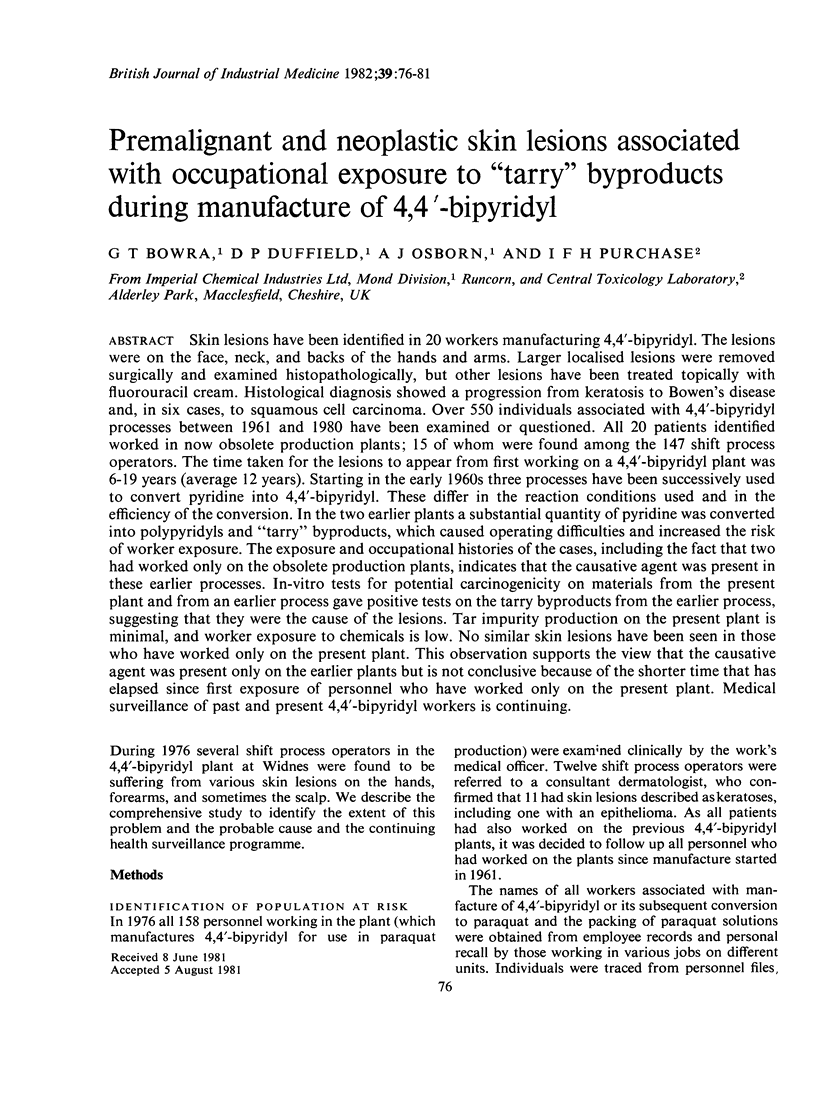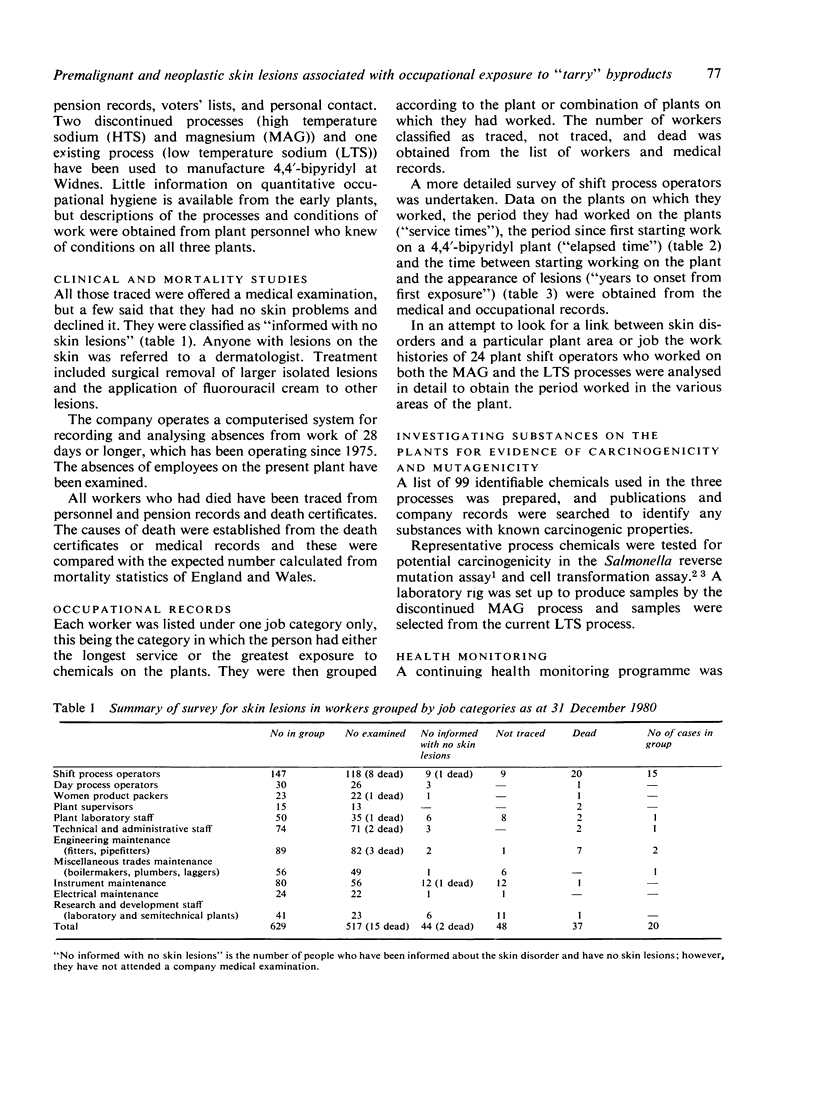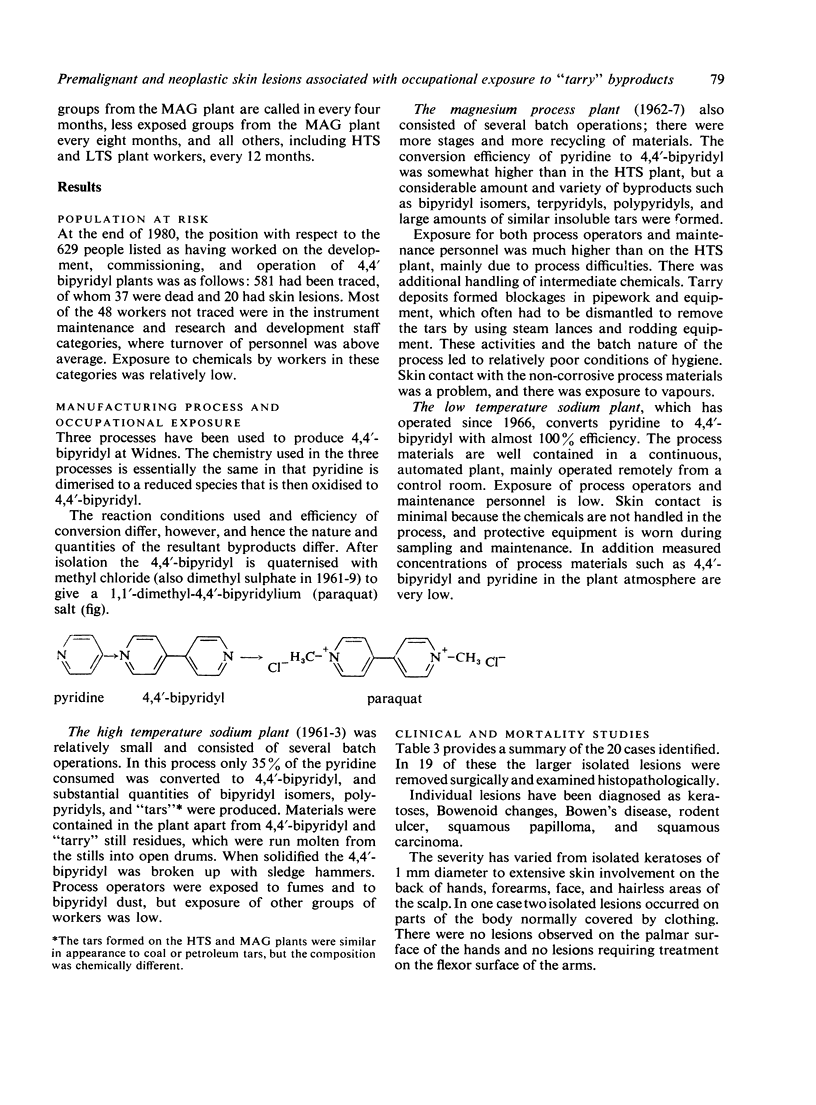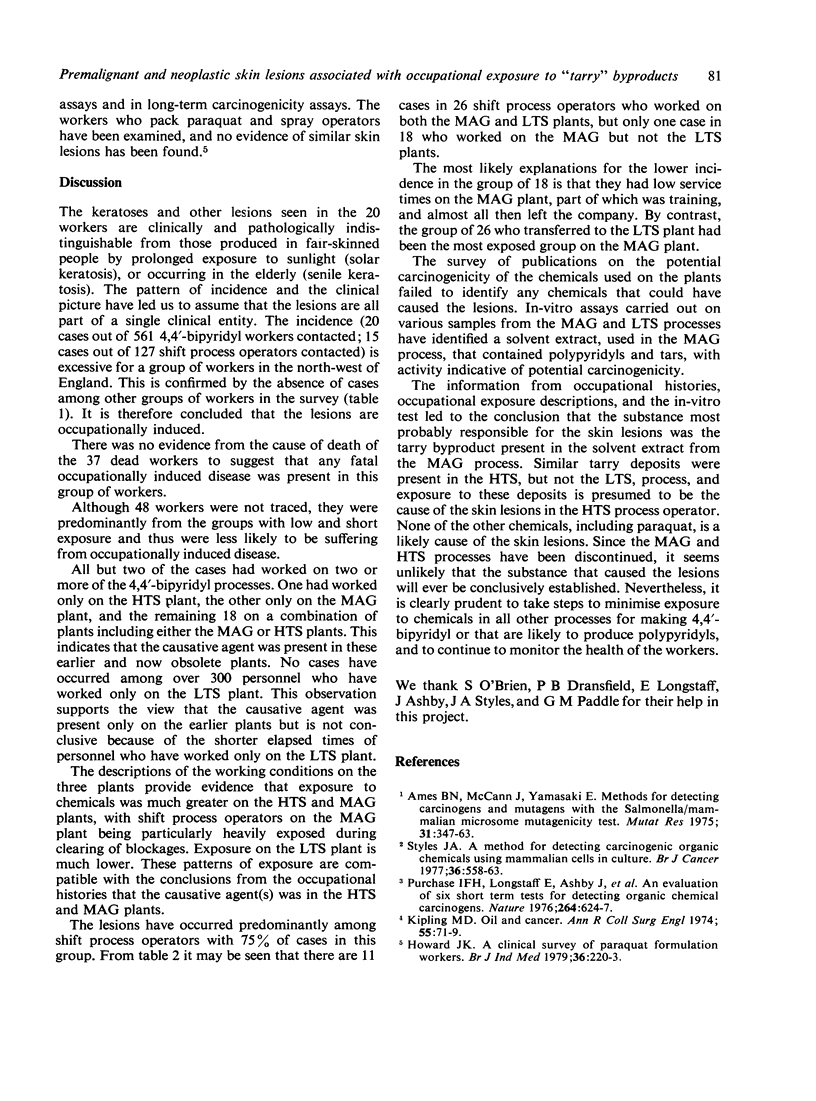Abstract
ABSTRACT Skin lesions have been identified in 20 workers manufacturing 4,4'-bipyridyl. The lesions were on the face, neck, and backs of the hands and arms. Larger localised lesions were removed surgically and examined histopathologically, but other lesions have been treated topically with fluorouracil cream. Histological diagnosis showed a progression from keratosis to Bowen's disease and, in six cases, to squamous cell carcinoma. Over 550 individuals associated with 4,4'-bipyridyl processes between 1961 and 1980 have been examined or questioned. All 20 patients identified worked in now obsolete production plants; 15 of whom were found among the 147 shift process operators. The time taken for the lesions to appear from first working on a 4,4'-bipyridyl plant was 6-19 years (average 12 years). Starting in the early 1960s three processes have been successively used to convert pyridine into 4,4'-bipyridyl. These differ in the reaction conditions used and in the efficiency of the conversion. In the two earlier plants a substantial quantity of pyridine was converted into polypyridyls and “tarry” byproducts, which caused operating difficulties and increased the risk of worker exposure. The exposure and occupational histories of the cases, including the fact that two had worked only on the obsolete production plants, indicates that the causative agent was present in these earlier processes. In-vitro tests for potential carcinogenicity on materials from the present plant and from an earlier process gave positive tests on the tarry byproducts from the earlier process, suggesting that they were the cause of the lesions. Tar impurity production on the present plant is minimal, and worker exposure to chemicals is low. No similar skin lesions have been seen in those who have worked only on the present plant. This observation supports the view that the causative agent was present only on the earlier plants but is not conclusive because of the shorter time that has elapsed since first exposure of personnel who have worked only on the present plant. Medical surveillance of past and present 4,4'-bipyridyl workers is continuing.
Full text
PDF





Selected References
These references are in PubMed. This may not be the complete list of references from this article.
- Ames B. N., Mccann J., Yamasaki E. Methods for detecting carcinogens and mutagens with the Salmonella/mammalian-microsome mutagenicity test. Mutat Res. 1975 Dec;31(6):347–364. doi: 10.1016/0165-1161(75)90046-1. [DOI] [PubMed] [Google Scholar]
- Howard J. K. A clinical survey of paraquat formulation workers. Br J Ind Med. 1979 Aug;36(3):220–223. doi: 10.1136/oem.36.3.220. [DOI] [PMC free article] [PubMed] [Google Scholar]
- Kipling M. D. Oil and cancer. Ann R Coll Surg Engl. 1974 Aug;55(2):71–79. [PMC free article] [PubMed] [Google Scholar]
- Purchase I. F., Longstaff E., Ashby J., Styles J. A., Anderson D., Lefevre P. A., Westwood F. R. Evaluation of six short term tests for detecting organic chemical carcinogens and recommendations for their use. Nature. 1976 Dec 16;264(5587):624–627. doi: 10.1038/264624a0. [DOI] [PubMed] [Google Scholar]
- Styles J. A. A method for detecting carcinogenic organic chemicals using mammalian cells in culture. Br J Cancer. 1977 Nov;36(5):558–563. doi: 10.1038/bjc.1977.231. [DOI] [PMC free article] [PubMed] [Google Scholar]


